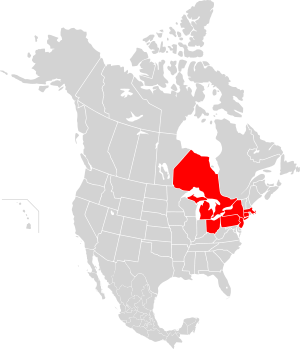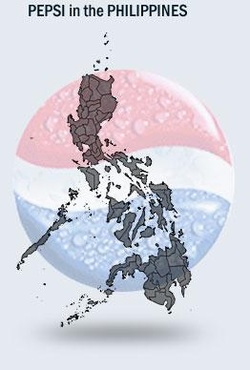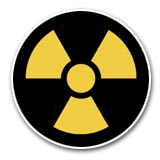10 Times Computers Tried To End The World

Computers, just like humans, are not infallible. Sometimes when computers mess up, things go more haywire than expected.
Let's take a look at 10 separate times computers messed up, with consequences way worse than expected.

Great Northeast Blackout, 2003
On Thursday, August 14th, 2003, a very large swath of people in the Northeast United states and most of Ontario, Canada suddenly lost all electrical power. No lights, no air conditioning; nothing. Many didn't get their power back on for over 2 days. The Blackout affected nearly 10 million people in Ontario, and 45 million people in 8 U.S. states. It was the second largest blackout in world history.
So what happened?
A computer bug caused an alarm system failure, which then bogged down the control room computers and eventually led to a string of bad calls, and the downfall of the power grids for every customer of FirstEnergy.

Honda's Mega Recall
In 2011, international car manufacturer, Honda, recalled 2.5 million cars. Many issues were cited, the most common being the automatic transmission not properly going into gear, eventually causing the transmission to break down and fail. Another issue cited was airbags deploying with too much force, possibly injuring a passenger in the vehicle.
Not only did they have to recall 2.5 million vehicles but many more were lost in overall sales, as the news broke and the public steered clear of possibly getting a vehicle affected by the issues.
So what happened?
It was a simple software bug. One of Honda's technicians made an error while typing the code for the control unit, it wasn't caught before the cars reached the market.

Google Pretends to be Malware
For over an hour in 2009, no website was accessible via Google. You could search all you like, but clicking any search result became an issue. Any website directed through Google's search engine was flagged as a malicious site and access was blocked, halting the user in their tracks. This incident cost Google over 3 million dollars.
So what happened?
A programmer accidentally inserted a forward slash, instead of a back slash.
The tiniest mistake had a huge impact. I hope his boss was understanding.

A Huge Jury!
At a courthouse in California, a jury of 1,200 people was assembling; or at least, trying to. The gigantic jury created an enormous traffic jam as 1,200 people all scramble to get to the court at 8 in the morning, resulting in nobody making it anywhere on time that day.
So what happened?
No, there weren't 100 cases going on at once. A computer glitch erroneously summoned 1,200 people at the same time. I guess the worst part is that the court apologized and told them their real summons for jury duty would soon come.

Riot in the Philippines
In 1992, Pepsi had a promotional contest running in the Philippines. It was set up like any of the other bottle cap contests that we are all familiar with - find the winning cap and win a prize.
In this case the prize was 1 million pesos, or about 40,000 American Dollars.
So what happened?
800,000 people won. The computer controlling the printing glitched, and printed 800,000 caps with the winning number, "349." Pepsi refused to pay out on account of the glitch and the Philippines fell into sheer chaos as people flooded the streets rioting in protest of Pepsi.

WoW Kills Thousands
World of Warcraft is a mass multi-player online game with a cult of followers. Back in 2005 the developers decided to create a disease in the game to add another layer of difficulty. They called this disease "Corrupted Blood."
So what happened?
The spell, which was only supposed to last seconds and only take affect within a new area of the game soon spread all across the world and spread like a plague, killing thousands. The virtual streets were littered with virtual corpses. A bug existed, which allowed minions and pets to take the affliction out of its normal confines, and it spread like wildfire.
St. Mary's Mercy
St. Mary's Mercy is a medical center in Grand Rapids, Michigan where a peculiar thing took place. Some 8,500 patients who had visited the hospital and learned shortly after that they were apparently dead. Imagine feeling completely fine, but then you find out, by way of a bill in the mail, that you're dead. St Mary's Mercy even notified the Social Security office and the insurance companies.
So what happened?
A new patient management software went haywire. A "Mapping Error" erroneously labeled patients as "20" which meant deceased, instead of "01" which meant discharged. Oops.

Therac-25 - Irradiating Patients
The fight against cancer is one we have been fighting for ages, and will still be fighting for the foreseeable future. I don't think I need to explain how bad cancer is.
In the mid 1980's a company in Canada, Atomic Energy of Canada Limited, created a radiation therapy machine called Therac-25. This machine was supposed to make it faster and cheaper to offer radiation therapy to patients. That is, until the machine decided to kill 6 people.
So what happened?
The machine contained several software glitches which resulted in the patients being bombarded with over 100 times the intended dose of radiation. Whoa.

Big Bank Makes Big Loss
Knight Capital Group was a large player on the stock market in 2012, when they single handedly created one of the largest stock market disruptions in recent history. These disruptions affected nearly 150 separate companies; in some cases altering company's stock prices as much as 5 times its original cost. This caused its own stock price to plummet almost 70%, costing Knight Capital 440 million dollars.
So what happened?
Knight Capital had a test software code that they had usually used on a closed system to test its trading software's algorithms by altering many stock's prices. They accidentally deployed the test code on their live network and caused pure chaos.
Nukes Everywhere!
We all remember the Cold War. Okay, many of us don't, let's face it, 20 years isn't exactly yesterday.
At the height of the cold war, tensions were at an all time high between the U.S. and Soviet Russia. Both sides were expecting the other to lose their cool and just start flinging nukes like a drunken monkey flings poo. Then one day, it happens. American systems light up like crazy, indicating that there were 220 missiles in the air on their way to targets in the U.S.
The Air Force scrambles planes into the air, many carrying Nukes for delivery to the USSR, many more to shoot down the bombers that are undoubtedly on their way to do the same. Missile silo operators are put on order to prepare for launch.
Then, the commander in charge of NORAD double checks the satellites built especially to detect these kinds of things but sees nothing. No indications of any launches, no missiles in the air...
So what happened?
A cheap microchip failed and started displaying "2" when it should have shown "0." A 50 cent microchip almost turned the world into a nuclear wasteland.







